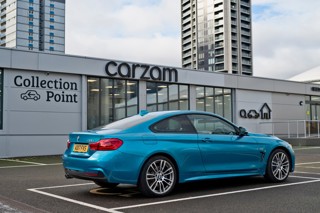Used car prices have risen by 6.7% during May as “amazingly strong” demand resulted in “unprecedented times” for the sector.
That is the appraisal of Cap HPI head of valuations, Derren Martin, in his latest market outlook report, which detailed a rise in the average value of a vehicle of £800 this month.
And Martin has urged retailers to re-price their stock in order to maximise profitability as stock shortages threaten to deliver a "sting in the tail".
Last week Martin said he had seen prices go “through the roof” with the market-wide used car values rise set to continue – potentially with another rise of over 6% in June.
But as used car retailers told AM that consumer demand was so strong that they “can’t stock the forecourt fast enough”, supply constraints are causing stocking headaches across the sector.
Cap HPI reported that May’s value rise – more than three-times the previous monthly increase in values – could be attributed to strong consumer demand and dwindling supplies.
“We really are in unprecedented times,” said Martin. “From franchise dealers to car supermarkets and independents, activity levels across the board have been amazingly strong, with sales rates ahead of budget and in most cases ahead of pre-COVID rates.”
With a degree of pent-up demand following ‘Lockdown 3’, so-called ‘accidental savers’ with money to spend, new car supply issues, and uncertainty over foreign holidays this summer, consumer demand for used cars has remained strong.
However, the current rises in car prices, which have manifested in the trade arena, have not been replicated in retail, making it increasingly difficult for the trade to buy cars working back from retail advertised prices, Cap HPI said.
With many outlets continuing to sell cars purchased a few weeks ago, not all have been increasing advertised prices of cars in-line with the increased demand they were experiencing.
Some wholesalers are now selling cars at well in excess of 110% of monthly cap values and some manufacturers selling their cars close to 120%, according to Cap HPI data.
This helped to make auction cars look attractively priced, even though with increased competition they were also selling for way ahead of monthly cap figures.
Among Cap HPI’s examples of price rises in the volume sector were: Ford Fiesta up 8.5%, (over £1,000 at the 1-year age point); Audi A3 up over 7% (£1,300 at 1-year old, £800 at 3-years); Vauxhall Zafira up 10.4% (c.£750 at 3-years); Mazda 6 up 8.1% (c.£700 at 3-years); BMW X3 up 6.2% at 3-years old (c.1,500); and Volkswagen Tiguan Petrol up 10% or £2,400 at the 1-year point.
“There is no tsunami of stock waiting to appear,” said Martin. “There are well documented new car supply issues, meaning less part-exchanges and fleet returns due to component shortages, particularly for semiconductors.
“From late June/July, stock levels will have dwindled and the component shortage could well be impacting supply more acutely, depending on the brand. The semiconductor issue could well have an even greater sting in the tail.”
Commenting in response to April's new car manufacturing data, What Car? editorial director, Jim Holder, today highlighted the impact of global shortage of semiconductor microchips on the used car sector.
While OEMs remain uncertain of the length of the crisis imapcting car production across the globe, Holder said: “Our latest research of 1920 in-market buyers has found 38% of new car buyers are not willing to wait more than two months for their car.
“If waiting times cannot be met, 35% of buyers tell us they will look at existing stock or used models instead, which will add pressure to the already inflated used car market.”


















Login to comment
Comments
No comments have been made yet.